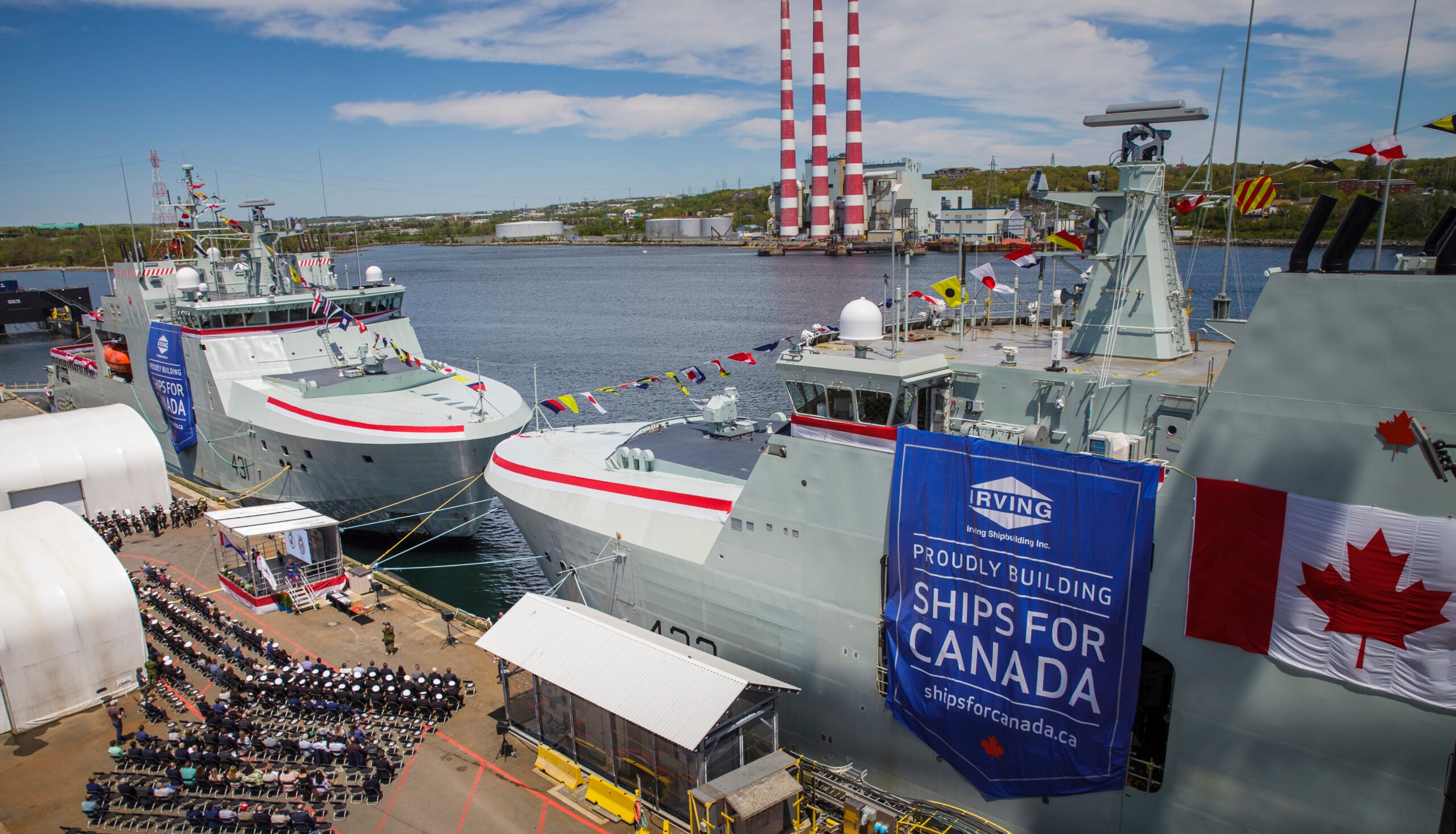
The Royal Canadian Navy (RCN) has named two of its Harry DeWolf-class Arctic and offshore patrol ships (AOPS) as HMCS Margaret Brooke and HMCS Max Bernays.
A naming ceremony was held at Halifax Shipyard in Nova Scotia on 29 May.

Discover B2B Marketing That Performs
Combine business intelligence and editorial excellence to reach engaged professionals across 36 leading media platforms.
The event was attended by the members of the RCN, the federal and provincial government, ships’ sponsors, and shipbuilders.
Both ships have been named after RCN Second World War (WWII) heroes, former lieutenant commander Margaret Martha Brooke and former chief petty officer (CPO) Max Bernays.
Bernays was one of the two members of the RCN to receive the Conspicuous Gallantry Medal (CGM) for his valour.
Brooke served the RCN from 1942 to 1962 and was named as a Member of the Order of the British Empire.

US Tariffs are shifting - will you react or anticipate?
Don’t let policy changes catch you off guard. Stay proactive with real-time data and expert analysis.
By GlobalDataCanadian Minister of Public Services and Procurement Filomena Tassi said: “In Halifax, we officially named two new AOPS, HMCS Margaret Brooke and Max Bernays, honouring two Canadian naval heroes.
“I would like to thank Irving Shipyard for their great work on these two ships that will serve in the Canadian Armed Forces for decades to come.”
Irving Shipbuilding received a contract to build six Harry DeWolf-Class AOPS for the RCN under the Canadian Government’s National Shipbuilding Procurement Strategy (NSPS).
Under this contract, the first vessel, HMCS Harry DeWolf, was commissioned by RCN in June 2021.
The company handed over the second AOPS, HMCS Margaret Brooke, to the RCN in July 2021.
Delivery of the third vessel, HMCS Max Bernays, is expected this autumn.
The AOPS are 100m-long, ice-capable vessels that can perform a wide range of operations in Canadian waters and the Arctic region.
These missions include armed sea-borne surveillance to provide situational awareness of the activities in the regions.





